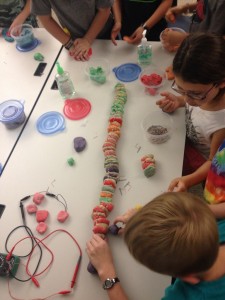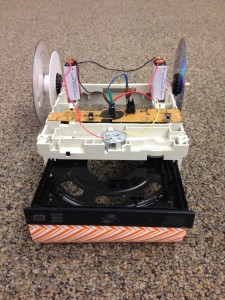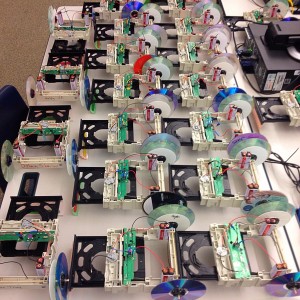 Analytics can be called data mining. In the field of education, it can be referred to as Learning Analytics. This is the process of collecting data from student responses to curriculum content. This data can be used to inform instructional practices, allowing a teacher to tailor her instruction to student need, alerting her to early intervention. One such resource for this data collection is Classroom Salon. The CRES computer lab is currently using this resource with 4th, 5th and 6th graders. This resource is similar in design to that developed by the Smarter Balanced Assessments Consortium to assess reading skills. CRES students will be using online assessments as publishers move away from pencil and paper exams to those that can be delivered digitally.
Analytics can be called data mining. In the field of education, it can be referred to as Learning Analytics. This is the process of collecting data from student responses to curriculum content. This data can be used to inform instructional practices, allowing a teacher to tailor her instruction to student need, alerting her to early intervention. One such resource for this data collection is Classroom Salon. The CRES computer lab is currently using this resource with 4th, 5th and 6th graders. This resource is similar in design to that developed by the Smarter Balanced Assessments Consortium to assess reading skills. CRES students will be using online assessments as publishers move away from pencil and paper exams to those that can be delivered digitally.
Through Classroom Salon, an instructor can upload videos and documents she wishes to use as teaching resources. She can use markup analytics (tagging) to better gauge the effectiveness of her teaching and the ability of her students to understand concepts. As students read a document or watch a video, they can pause at any spot along the way, tagging and composing responses. Tags that might be appropriate for college students could include Clarify, Discuss in Class, Important Point. Tags that might be more appropriate for younger students could include I have a question, Can You Explain, Agree/Disagree, I feel…. Collecting these types of responses can help the teacher efficiently identify areas of strength and weakness. The teacher can also quickly respond to students, correcting misunderstandings that could become permanent or difficult to correct. It’s also a great way to engage students because they’re interacting with their course materials. As pointed out in the article mentioned below: “Unlike a classroom setting, every student in a course using learning analytics answers every question, ensuring they interact with all course material.” So, there’s an accountability factor! I rather like this. I recall a student who didn’t do well on her reading exams. Her mother feared she had a learning disability. She actually suffered from “I did not read the text.”
Behavioral analytics provide insight into a student’s desire or ability to reply to other classmates or to post comments. Frequency of replying and commenting can also be captured. This kind of data collection helps the teacher learn more about her students’ areas of interest/motivation.
Social analytics refers to the level of interaction the students have with each other. Bloom’s Taxonomy places creativity and, in some models, collaboration at the top of the pyramid; collaboration is also one of the important skills students are expected to develop according to the International Society for Technology in Education. These analytics help the teacher identify who are the leaders, followers, and helpers in the course.
Finally, document analytics, help the teacher learn about the ability of her resources to develop student understanding. Many teachers have had the experience of giving an exam with the best of expectations only to find to the contrary, that 75% of the class scored poorly. Document analytics helps the teacher see areas of weakness in her existing curriculum: red hotspots tell the teacher some of her content may need better explanation/support.
The future of analytics:
A recent article titled Will Analytics Transform Education (http://www.learningfrontiers.eu/?q=story/will-analytics-transform-education) brought up a few interesting questions worth discussion: 1) will data mining attempt to replace the teacher 2) could this data collection distinguish student guessing from knowing multiple-choice answers 3) what happens to this collected data (privacy concerns) 4) is this an example of running education like a business.
I think learning analytics/data mining is here to stay. It has the potential to improve teaching practices and student outcomes.
This report was prepared for Flipping Your Class: An Analytics-Based Approach. This course is offered through HP Catalyst Academy. This document is available for response at this link: http://classroomsalon.com/annotations/Individual.aspx?document=17997












